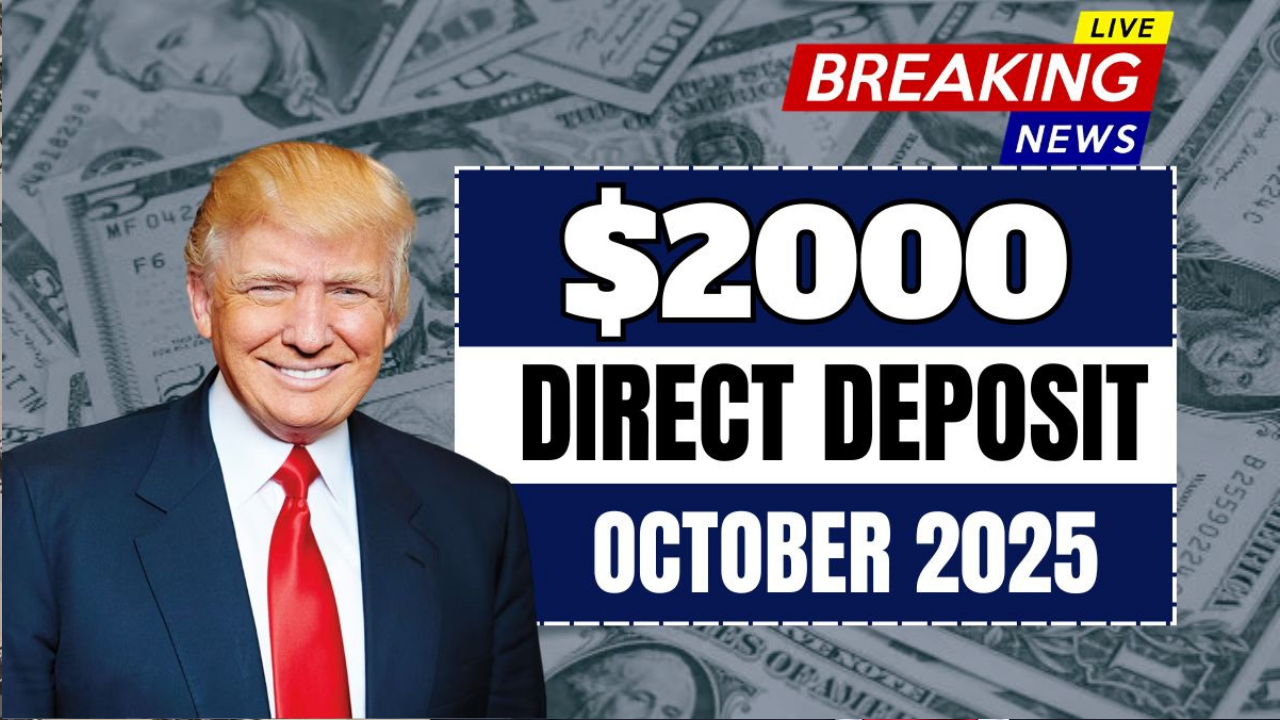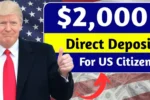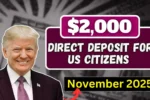$2,000 Federal Direct Deposit:- Big news is coming in the United States—the federal government is preparing to deliver $2,000 direct deposit payments to eligible Americans in October 2025. This new financial relief is intended to help families cope with rising living costs, inflation, and other economic challenges affecting millions across the country.
While many are calling it a “fourth stimulus,” officials have clarified that it is part of a larger financial relief initiative—one focused on alleviating economic pressures rather than fueling inflation. Here’s everything you need to know about the $2,000 federal direct deposit payment, including eligibility rules, payment dates, IRS procedures, and frequently asked questions.
Why the $2,000 Federal Payment is Coming Now
Throughout 2025, Americans have faced persistent economic hardship—from rising grocery prices and rent increases to rising healthcare costs. Although the job market has remained stable, salaries have not kept pace with inflation, leaving many families struggling financially.
To address these challenges, the federal government has proposed a one-time direct payment of $2,000 to provide short-term relief to working families, retirees, and low-income individuals. The aim is to deliver aid directly to citizens’ pockets, helping them pay bills, manage essentials, and increase consumer spending ahead of the festive season.
Economic analysts predict that these payments could also boost local economies, as Americans use the money to purchase goods and services in their communities.
Who is eligible for the $2,000 payment?
Eligibility for the upcoming payment is based on previous stimulus and relief programs from the IRS and the U.S. Treasury Department.
The details of who is eligible under the current proposal are as follows:
Eligible recipients:
- Single filers earning up to $75,000 per year
- Heads of household earning up to $112,500 per year
- Married couples filing jointly earning up to $150,000 per year
- Dependents (children, seniors, or disabled adults) may be eligible for an additional partial payment through their head taxpayer.
People receiving Social Security (SSA), Supplemental Security Income (SSI), Veterans Affairs (VA), or Railroad Retirement benefits will also automatically qualify and receive payments to their registered account.
Ineligible recipients:
- People earning above the income limit
- Non-resident aliens or those without a valid Social Security Number (SSN)
- Those who owe significant back taxes or child support, which could result in a reduction or delay in payment
Payment Schedule: When will you receive it?
The $2,000 federal payment will begin in October 2025 and will be distributed in phases to avoid system delays. While the exact dates may vary depending on individual eligibility and banking methods, here’s a rough timeline:
- Week 1 (October 7-11, 2025): Direct deposit for taxpayers with active IRS bank details
- Week 2 (October 14-18, 2025): Payments for Social Security, Small Business (SSI), and VA beneficiaries
- Week 3 (October 21-25, 2025): Paper checks mailed to recipients without direct deposit arrangements
Most Americans should receive their payment by the end of October 2025. However, the IRS recommends checking your bank details and address to avoid delays.
How will payments be sent?
The IRS will process payments using the same system used for previous stimulus checks.
- Payments will be made in three main ways:
- Direct deposit: The fastest option for those whose banking information is on file.
- Payment check: Mailed directly to the address provided on your latest tax return.
- Prepaid debit card: For those without a bank account.
To simplify the process, recipients are asked to log into their IRS online account and confirm that their bank and mailing information is up-to-date.
IRS Instructions for Recipients
The IRS has issued several important reminders for Americans awaiting payments:
- File your 2024 tax return: Payments will be based on your 2024 income data, which you filed earlier in 2025.
- Avoid fraud: The IRS will never contact you by phone, email, or text message for payment details. Always check IRS.gov for official updates.
- Track your payment: Once distribution begins, a new version of the “Get My Payment” tool will be launched on the IRS website.
- Non-filers: Those who haven’t filed taxes will have access to a simple online registration portal to claim their payments.
What this means for American families
For millions of Americans, this $2,000 can be used to pay outstanding bills, rent, or buy groceries and gas. Senior citizens living on fixed incomes can use it to cover healthcare expenses, while working families can finally get some relief after a year of rising expenses.
Experts say that in addition to providing immediate financial relief, this payment could boost community spending and support small businesses—as previous stimulus programs have done.
The overall message from Washington is clear: this isn’t just about short-term relief—it’s about strengthening the financial capacity of American families through 2026.
Final Thoughts
The $2,000 federal direct deposit payment, due in October 2025, is shaping up to be one of this year’s most anticipated relief measures. For millions of Americans still grappling with the effects of inflation, this payment could make a huge difference – helping families remain financially stable and confident as the economy recovers.
While the IRS and federal agencies finalize this plan, now is the time to ensure your tax and banking details are up-to-date – so that in October, you’ll be ready to receive the relief you deserve.
FAQs
1. Is this $2,000 payment confirmed?
Yes, it has been scheduled for October 2025 following federal approval, pending final rollout by the IRS.
2. Do I need to apply for the payment?
No. If you filed taxes or receive federal benefits, the payment will be issued automatically.
3. Will this payment affect Social Security or SNAP benefits?
No, this payment is tax-free and does not impact other benefits.
4. How will I know when I’m getting paid?
The IRS will provide an official update through the Get My Payment portal once processing begins.
5. What if I changed my bank or address recently?
Update your information through your IRS online account or during your next tax filing to ensure accurate delivery.
6. What if I didn’t file taxes recently?
Non-filers will likely be given an online registration form to claim their payment directly.





